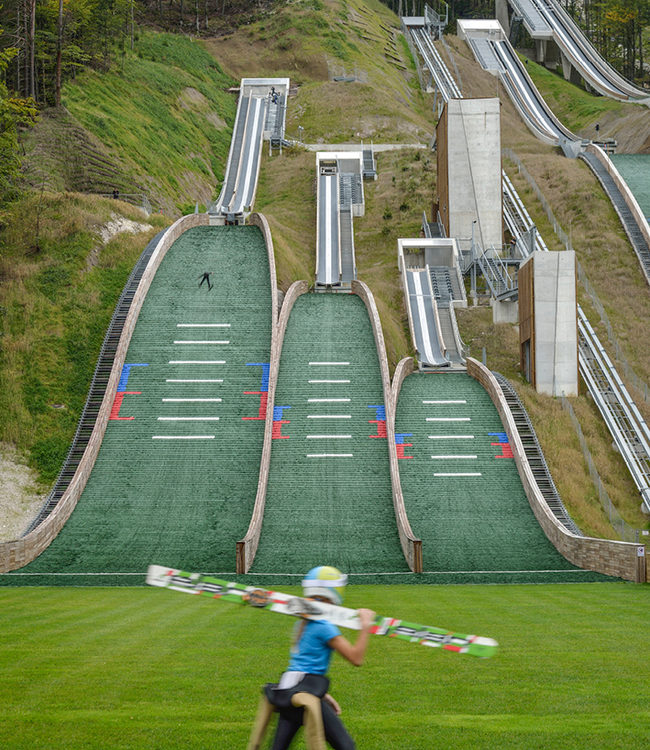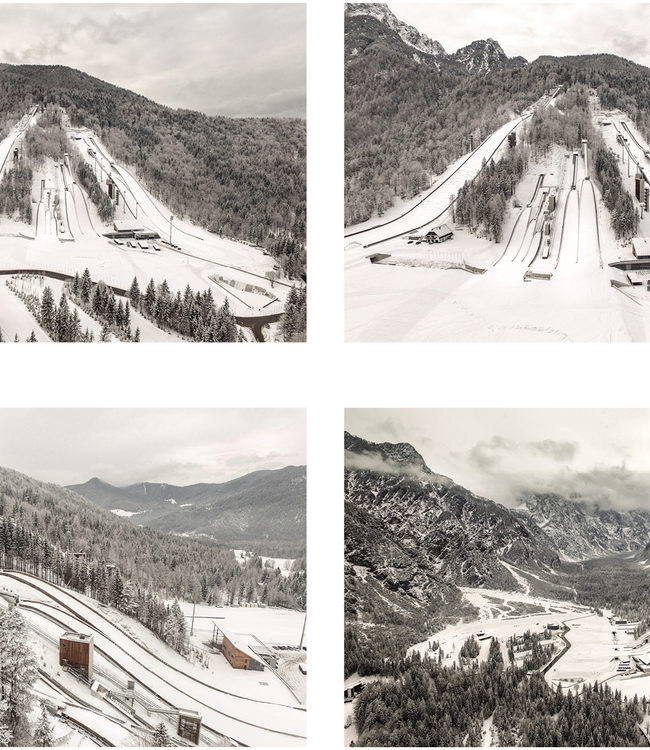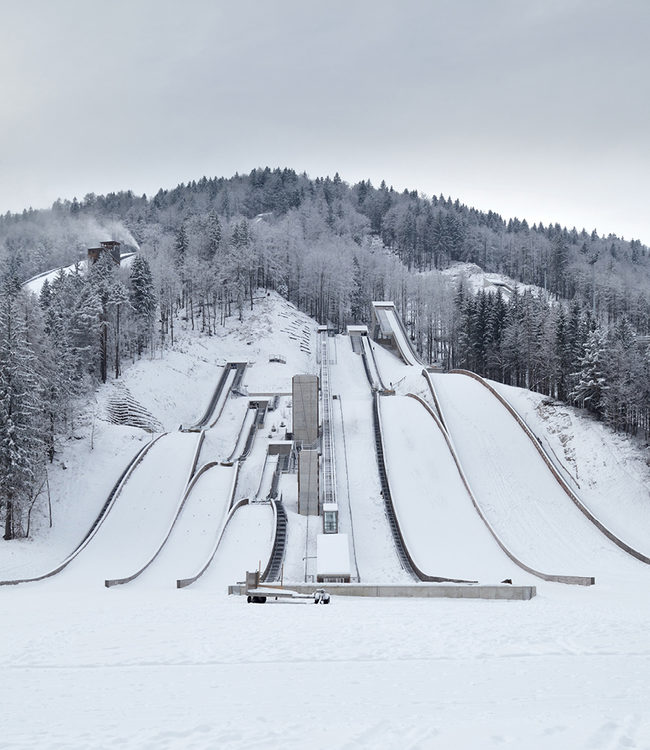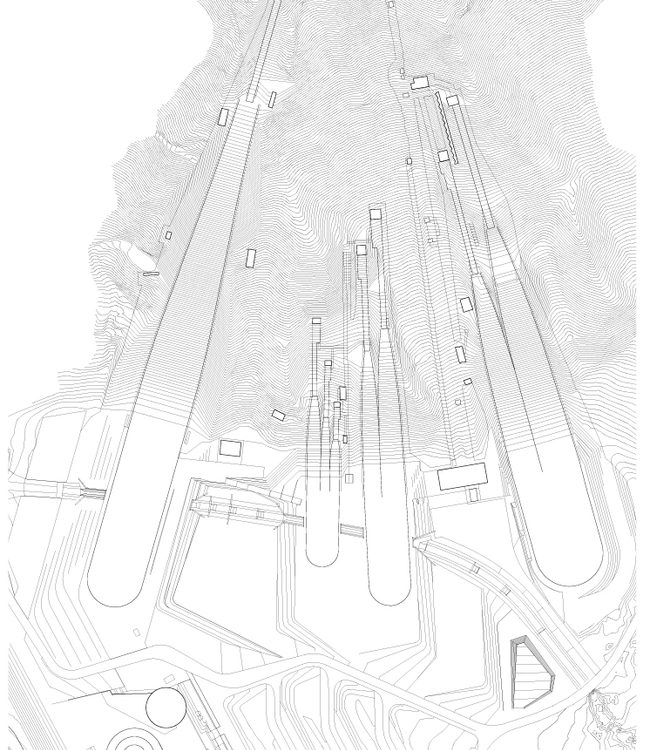Nordic Ski Center Planica
Vincitore
Edizione 2016
Ambito B
Soggetto ProponenteStudio Akka Ljubljana, Slovenia
Planica has been hosting the ski jump contests since the early Thirties and has gradually become a world-renowned centre for the World Cup Sky Flying Final. After years of use, the ski jumps needed a renovation and modernization and in 2009 the decision was made to create a Nordic Ski Centre on the site. The main aspect of design is based on a profound relation between construction, the constructed site and its natural setting. The precise design of topography, the systematic selection and reduction of material, bold shapes and clear geometrical forms, all line themselves with the exciting silhouette of the mountains and the calmness of the spruce and beech forest. The project works on many levels and relations: solid versus soft, resistant versus ephemeral, cold versus warm, monumental versus intimate. The seasonal changes span from the cold and sharp image of the mountains referring to the simple geometry of the topography and the concrete structures to the colourful abundance of the late summer, when the perception of the wooden details and green slopes is exposed. As Planica is set at the forefoot of the largest protected area in Slovenia and forms one of the most exciting entryways to the Triglav National Park, large sport facilities take their own, although restrained, stand. Planica is already symbolically charged which renders all excessive design redundant. The Alpine setting of this precise sport ritual is unique and recognizable. The refinement of the image is thus added on other levels, mainly on those of use and orientation. Design follows technical and organizational requirements of a large sport facility by which it clearly reveals the new character of the space. It stands in contrast to the natural dynamics of the surrounding mountain landscape and creates an organized, functional and technically flawless counterpart to the magnificent Alpine frame, perfected by the logic of engineering. The ski jumps that fan across the landscape introduce a spatial order that unites all elements into a non-hierarchical whole. Ski jumps are usually designed to facilitate largescale events with extensive infrastructure and demanding logistics. When more than 30,000 people come to this fragile valley, the form of the architecture gives way to its operational function, while on the everyday level, when a handful of young ski jumpers would come to train in solitude; its simplicity and robustness re-awaken and monumentally yet respectfully stand at the entrance into the valley. All service buildings, including the Daily visitors' Centre, were pushed to the edges to free the bottom of the valley for long vistas.
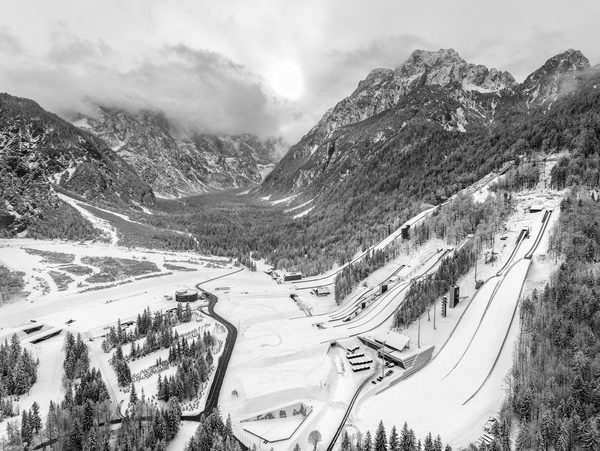
Localizzazione del progetto
, Slovenia, PLANICAMotivazione della Giuria
The initiative carried out in Planica, Slovenia, successfully deals with the difficult issue of the integration of ski infrastructure into the Alpine landscape. The project develops solutions that redefine the features of the original ski jumping centre, and correctly relate a prominent natural setting to the built elements with a strong character and a complex functional nature. The Nordic Ski Centre is the result of an accurate reorganisation of spaces that, by concentrating the presence of facilities and buildings on the ski jumping hills and by adopting, whenever possible, versatile and temporary solutions, returns a clear and consistent image to the valley floor. Although it is a major infrastructure project which is destined to manage large flows of visitors, through a wise and extensive use of terrain modelling, it is able to limit the perception of the buildings. These are characterised by a clear and distinctly sculptural presence which ensures a harmonious relationship with the natural morphology of the site. The solutions that aim to ensure the functionality of the facilities during most of the year in order to avoid the strictly seasonal nature of these types of infrastructure and prevent the degradation and abandonment that occur while skiing activities are suspended, are also remarkable. Finally, the attention given to vegetation regeneration and hydrological aspects which contribute to increasing the project environmental sustainability is another significant element.

